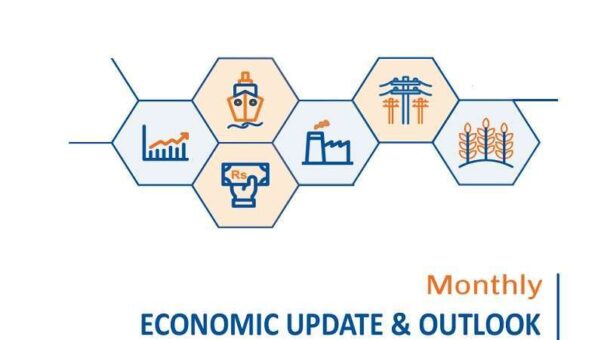Islamabad, April 30, 2024 – According to the Ministry of Finance’s Economic Update and Outlook for April, released this Tuesday, Pakistan’s national economy is set for a strong recovery, evidenced by encouraging macroeconomic indicators that signal sustained progress and development in the coming fiscal year.
The report highlights Pakistan’s significant resilience of the economy in both fiscal and external sectors, with the agricultural sector leading as a primary driver of economic growth this fiscal year. Agricultural output saw impressive growth rates of 8.6% and 5.0% in the first and second quarters of FY 2024, respectively.
Economic indicators are showing positive signs of recovery overall, with GDP growth rates estimated at 2.5% in the first quarter and 1.0% in the second quarter of the current financial year. Meanwhile, inflation has started a downward trend.
The uplift in the agricultural sector is largely attributed to government-led initiatives, which have improved the supply of inputs and increased credit disbursement to farmers. Notably, the production and sales of farm tractors surged by 59.7% and 65.8% respectively. Additionally, agricultural credit disbursement rose by 33.6% during the first eight months of the financial year, accompanying a notable increase in the production of key crops. Cotton production doubled, rice output grew by 34.8%, and maize production increased by 5.6%.
Conversely, the Large Scale Manufacturing (LSM) sector saw a marginal decline of 0.5% during the first eight months of the current fiscal year, an improvement over last year’s 4.0% contraction. Across sub-sectors, 11 out of 22 reported positive growth.
Consumer Price Index (CPI) inflation also recorded a significant year-on-year decline, reaching the lowest rate in 21 months. In March, CPI inflation dropped to 20.7% from 35.4% the previous year, with major contributions from food items, housing, utilities, and household maintenance costs.
On the fiscal front, the primary balance showed a surplus of Rs1,834.0 billion during July-February 2023-24, a significant increase from Rs 780.5 billion in the same period last year. Net federal revenues also saw substantial growth of 51%, driven by increases in both tax and non-tax collections.
Despite higher mark-up payments pressuring total expenditures, the fiscal deficit was slightly up at 3.0% of GDP compared to 2.8% last year. The external sector showed improvements as well, with the current account deficit narrowing significantly to $0.5 billion for Jul-Mar FY2024 from $4.1 billion last year. March alone saw a current account surplus of $619 million, a dramatic increase from $98 million in February.
Remittances in March 2024 experienced a remarkable year-on-year growth of 16.4%, totaling $3.0 billion compared to $2.5 billion in March 2023, with a month-on-month increase of 31.3%. Foreign Direct Investment (FDI) also rose by 89.4% to $258 million, reflecting a more favorable investment climate.
The State Bank of Pakistan has maintained the policy rate at 22% since July, reaffirming this stance at the recent Monetary Policy Committee meeting on April 29, 2024. Money supply growth also reflected positive trends, with a 5.9% increase recorded from July 1, 2023, to March 29, 2024.
Additionally, the IMF’s Executive Board has recently approved the second review under the Stand By Arrangement (SBA) for Pakistan, allowing for an immediate disbursement of $1.1 billion, signifying international confidence in Pakistan’s economic reforms and recovery path.
